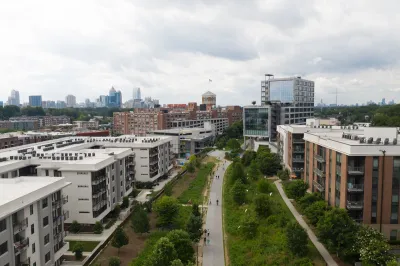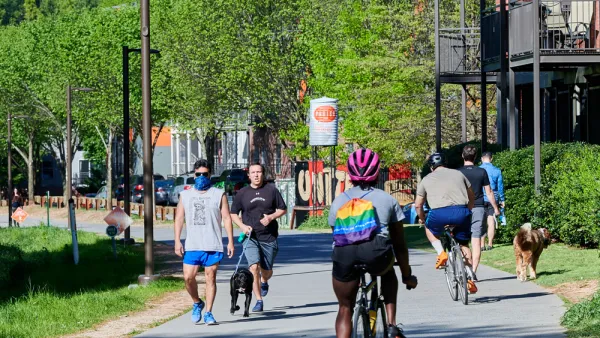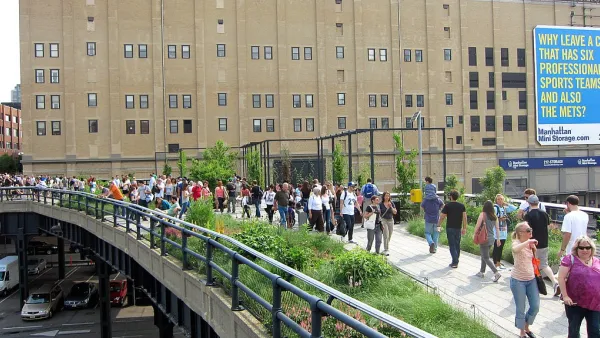New parks are great—but some projects displace the very people the green spaces are meant to serve.

“Again and again, researchers have found that access to urban green spaces – from parks to gardens to greenways – positively impacts multiple measures of health, such as community satisfaction, social cohesion and access to healthy foods.”
However, caution Viniece Jennings, Alessandro Rigolon, and Na’Taki Osborne in Next City, new parks can also lead to the displacement of low-income residents and, “perhaps counterintuitively, green gentrification can also exacerbate inequities in health, finances, quality of life and — ironically — access to green spaces.”
As the authors explain, “A scoping review on green gentrification and health examines numerous studies wherein residents experience a lower sense of community, diminished sense of belonging and less green space usage among long-term residents.” The research shows that increasing property values and a lack of renter protections can put greener cities out of reach for many households. “For example, although affordable housing was initially a part of the vision of the Atlanta Beltline, a shift in priorities and a state ban on rent control (among other factors) diminished this commitment,” the article points out.
“To support health equity as the pathway for everyone to achieve optimal health, cities must address the factors that diminish affordable housing and the consequences of green gentrification.” Some cities are working to address these issues using tools like inclusionary zoning requirements near large parks and rent stabilization initiatives.
The article concludes, “Improving neighborhoods is not the fundamental problem with gentrification and possible residential displacement. It’s the systemic force that aims to set the bar of who has long-term access to quality environments and affordable housing.”
FULL STORY: When Green Spaces Displace Residents, Our Cities’ Health Suffers

National Parks Layoffs Will Cause Communities to Lose Billions
Thousands of essential park workers were laid off this week, just before the busy spring break season.

Retro-silient?: America’s First “Eco-burb,” The Woodlands Turns 50
A master-planned community north of Houston offers lessons on green infrastructure and resilient design, but falls short of its founder’s lofty affordability and walkability goals.

Delivering for America Plan Will Downgrade Mail Service in at Least 49.5 Percent of Zip Codes
Republican and Democrat lawmakers criticize the plan for its disproportionate negative impact on rural communities.

Test News Post 1
This is a summary

Test News Headline 46
Test for the image on the front page.

Balancing Bombs and Butterflies: How the National Guard Protects a Rare Species
The National Guard at Fort Indiantown Gap uses GIS technology and land management strategies to balance military training with conservation efforts, ensuring the survival of the rare eastern regal fritillary butterfly.
Urban Design for Planners 1: Software Tools
This six-course series explores essential urban design concepts using open source software and equips planners with the tools they need to participate fully in the urban design process.
Planning for Universal Design
Learn the tools for implementing Universal Design in planning regulations.
EMC Planning Group, Inc.
Planetizen
Planetizen
Mpact (formerly Rail~Volution)
Great Falls Development Authority, Inc.
HUDs Office of Policy Development and Research
NYU Wagner Graduate School of Public Service





























